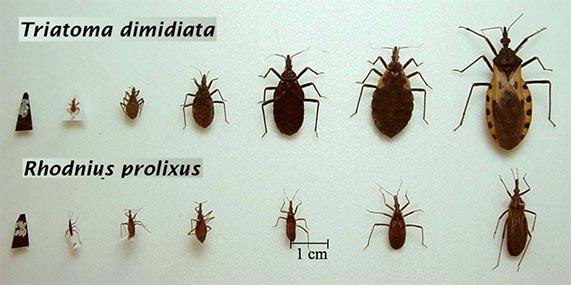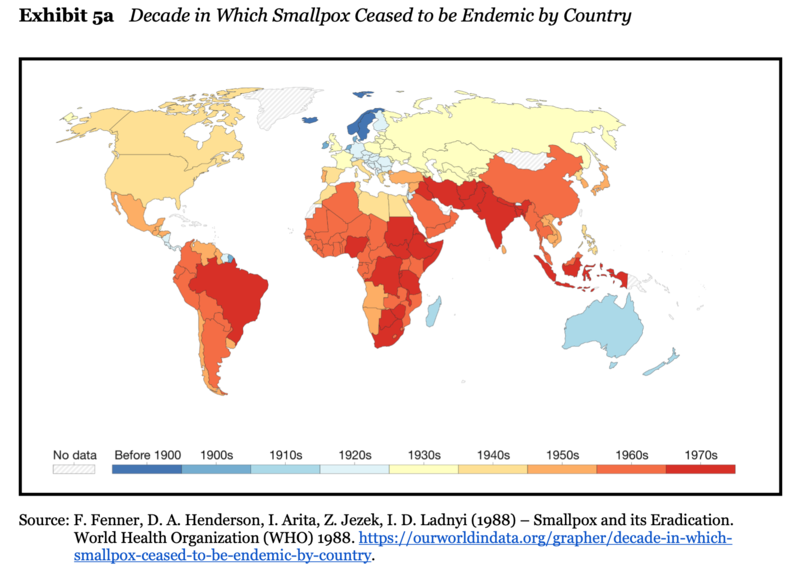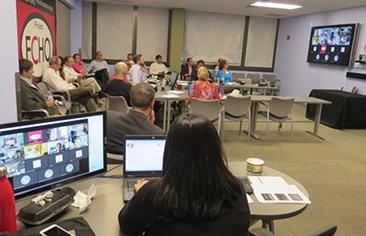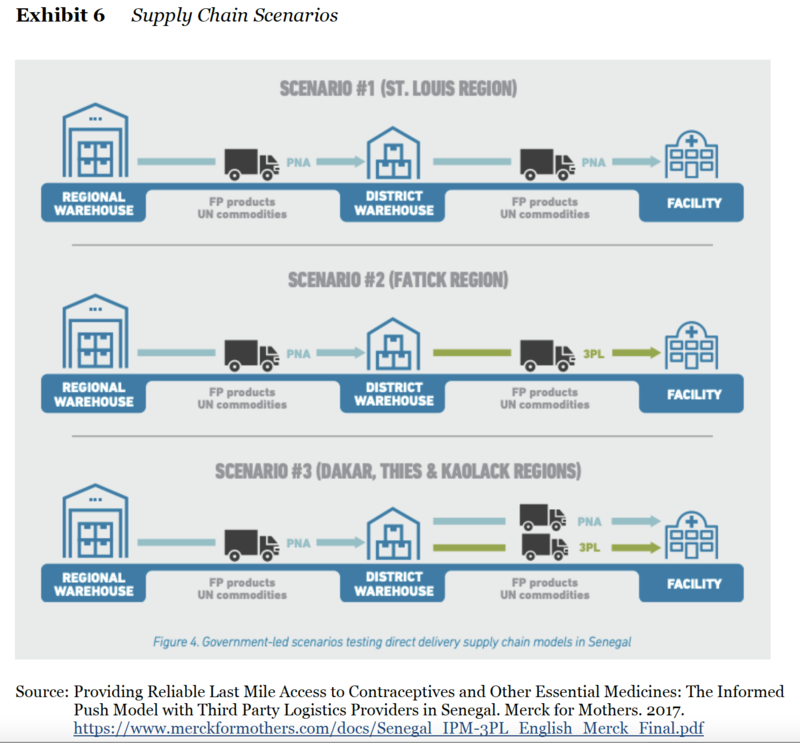Drivers of Decision Making: The Stories behind Maternal and Child Health in Uttar Pradesh, India
Chagas Disease Vector Control in Honduras
Citation:
Abstract:
This case describes how the Honduran Ministry of Health developed and implemented a Chagas disease control program with the assistance of the Japan International Cooperation Agency (JICA) and others from 2003 to 2012. After providing background information about Honduras and Chagas disease, the case examines the work of the Guatemalan Ministry of Health and JICA to implement a Chagas disease control program that provided the template for the program in Honduras. The case then describes the adaptation of this model for the Honduran context, including details of the surveillance model and vector control interventions. The case concludes with the program considering how it would maintain its success in spite of decreased funding and changes in leadership.
Teaching Note available through Harvard Business Publishing.


Learning Objectives: A productive class discussion will allow students to appreciate strategies in control of neglected tropical diseases; Chagas disease vector control and surveillance; the role of bilateral cooperation to strengthen health systems management; and how regional disease control initiatives are implemented locally.
Keywords: Information management, scale-up, health care policy, public administration, government policy, resource-limited settings, data-collection
Eradicating Smallpox: Delivery Strategies to Reach the Last Mile
Citation:
| ghd-047_Eradicating_Smallpox.pdf | 12.14 MB |
Abstract:
In this teaching case, Dr. William Foege - the former director of the US Centers for Disease Control and Prevention who many credit with eradicating smallpox - helps readers understand what it took to eradicate it. The case gives background information on the disease, as well as earlier immunization efforts, and describes how the social, political, and economic complexities of India impacted public health initiatives. As international endeavors to fight smallpox expanded in the 1960s, India continued to account for a disproportionate percentage of new cases. Cases remained high until a more organized and targeted strategy in the 1970s increased staffing, improved reporting, boosted vaccination rates, and expanded national and international resources. Specific national and local strategies, a coordinated and centralized decision making structure, and an understanding of and clear communication with the population were crucial to the nation’s success. The state of Bihar was the most challenging state to address, with cases remaining stubbornly high. A final campaign intensified surveillance, containment, and vaccination efforts in Bihar, and the Global Commission for the Certification of Smallpox Eradication declared India smallpox-free in 1977. The case ends with Dr. Foege wondering what lessons from smallpox eradication in India can be applied to the COVID-19 pandemic, as well as future threats.
Learning Objectives:
This case documents the eradication of smallpox in India. A productive class discussion will allow students to appreciate the following:
- The role of power dynamics in global health
- The role of data and the importance of measuring the right outcome to inform program management
- Human resource management and its relationship to stakeholder management
- The relationship between disease presentation and public health strategy and decision-making
- How to build on what is known in confronting new contexts, diseases, and environments

Keywords: India, public health, pandemic response, vaccine delivery, workforce management, collaboration, multilateral engagement
Project ECHO: Expanding the Capacity of Primary Care Providers to Address Complex Conditions
Citation:
Abstract:
This case takes place in the United States (US) and traces the inception and growth of Project Extension for Community Healthcare Outcomes (Project ECHO)—a web-based "guided practice" model for primary care providers—from 2003 to 2016. After providing background on the US health system, including medical education, health care financing, and the supply and distribution of primary care and specialist providers, the case explores what motivated Project ECHO founder and liver specialist Sanjeev Arora, MD to train primary care providers in rural New Mexico in hepatitis C treatment and management. It describes early replication of the ECHO model in the US and across medical conditions and what the Project ECHO model entailed—including leveraging technology to expand access to specialty resources, best practices, case-based learning, and outcome monitoring, as well as good will among participants. A professional communications campaign, ongoing research, and persistence supported Project ECHO’s growth. The case displays three dimensions of Project ECHO’s early work: creating a new mode to redistribute the expertise of specialists to primary care practitioners, scaling this new care delivery model and measuring its impact, and identifying sustainable funding sources. The case concludes with the US Congress passing the ECHO Act to promote research on the model and Arora contemplating what else he might need to continue to scale to reach his goal of touching 1 billion lives.
Teaching Note available through Harvard Business Publishing.


Learning Objectives: To understand what is needed to design a service model; the potential for redistribution of expertise among practitioners to enhance value; the role of operational effectiveness in enabling scale up; and the importance of measuring impact for stakeholders.
Keywords: Public health, health care delivery, scale-up, resource-limited settings, human resource, information technology, primary care, information management, data collection, mentorship
Eradicating Smallpox: Delivery Strategies to Reach the Last Mile
Citation:
| ghd-047_Eradicating_Smallpox.pdf | 12.14 MB |
Abstract:
In this teaching case, Dr. William Foege - the former director of the US Centers for Disease Control and Prevention who many credit with eradicating smallpox - helps readers understand what it took to eradicate it. The case gives background information on the disease, as well as earlier immunization efforts, and describes how the social, political, and economic complexities of India impacted public health initiatives. As international endeavors to fight smallpox expanded in the 1960s, India continued to account for a disproportionate percentage of new cases. Cases remained high until a more organized and targeted strategy in the 1970s increased staffing, improved reporting, boosted vaccination rates, and expanded national and international resources. Specific national and local strategies, a coordinated and centralized decision making structure, and an understanding of and clear communication with the population were crucial to the nation’s success. The state of Bihar was the most challenging state to address, with cases remaining stubbornly high. A final campaign intensified surveillance, containment, and vaccination efforts in Bihar, and the Global Commission for the Certification of Smallpox Eradication declared India smallpox-free in 1977. The case ends with Dr. Foege wondering what lessons from smallpox eradication in India can be applied to the COVID-19 pandemic, as well as future threats.
Learning Objectives:
This case documents the eradication of smallpox in India. A productive class discussion will allow students to appreciate the following:
- The role of power dynamics in global health
- The role of data and the importance of measuring the right outcome to inform program management
- Human resource management and its relationship to stakeholder management
- The relationship between disease presentation and public health strategy and decision-making
- How to build on what is known in confronting new contexts, diseases, and environments

Keywords: India, public health, pandemic response, vaccine delivery, workforce management, collaboration, multilateral engagement
Improving Maternal Health by Addressing Stockouts: Integrating the Private Sector into the Public Health Supply Chain in Senegal
Citation:
Abstract:
This case traces the development of a series of initiatives to intended to reduce stockouts of family planning commodities in Senegal’s public health system and the eventual scale up of the redesigned supply chain to include additional commodities and its transfer of management to the government. After providing some background on the history of Senegal, including its governance and health system, the case explores early efforts to overhaul the supply chain in the country and reproductive health efforts. It then describes the Gates Foundation’s involvement and how the relationship between family planning and supply chain management came to light. The Gates Foundation, along with others, supported the launch of the Informed Push Model with Third Party Logisticians (IPM-3PL), which proved to reduce stockouts dramatically. Despite significant initial support from both government ministries and international donor agencies, as the program scaled IPM-3PL did not survive the transition to a fully government-run model, and the program was eventually discontinued in 2019 after two attempts to hand over the program to Senegal’s National Supply Pharmacy (Pharmacie Nationale d'Approvisionnement; PNA), the government agency in charge of distribution of medicines. The case ends with the director of the PNA contemplating what was next for Senegal and what she could tell others who had been so closely watching the country as an example.
|
Learning Objectives: |
|
This case documents the need for and process to overhaul Senegal’s public health supply chain. A productive class discussion will allow students to appreciate the following:
|
Keywords: supply chain management, private-public partnership, maternal health, third party logisticians, informed push model, scale up, distribution
Mother Perspective
Mother Perspective
Follow Pari as she grapples with how best to care for her growing family. Learn about the daily choices and challenges she faces and how she interacts with the health system. Read the case »
CHW Perspective
Community Health Worker Perspective
Walk through the life and work of community health worker Savita. Discover how she makes decisions and prioritizes services for families in her rural community. Read the case »
Program Perspective
Program Perspective
Trace the steps of the Gates-funded Technical Support Unit as it works with the state government to reduce mortality and increase contraceptive use. Where does it succeed, and where does it fall short? Read the case »
Concept Note: CHWs
Concept Note: Community Health Workers
This concept note provides an overview of community health workers and may be useful background reading for students. Read the concept note »
Concept Note: Maternal & Child Health
Concept Note: Maternal and Child Health
This concept note provides an overview of maternal and child health and may be useful background reading for students. Read the concept note »
